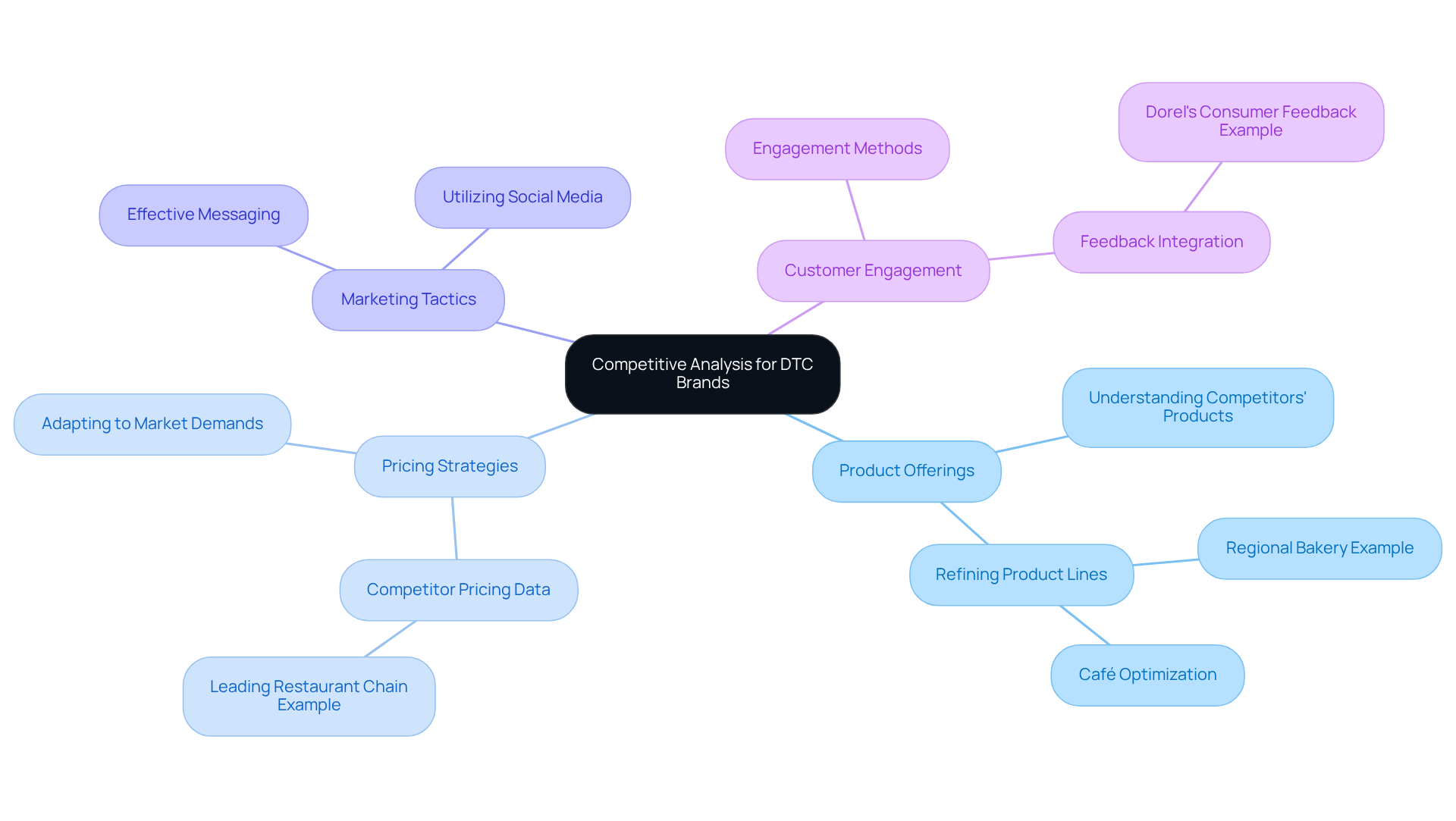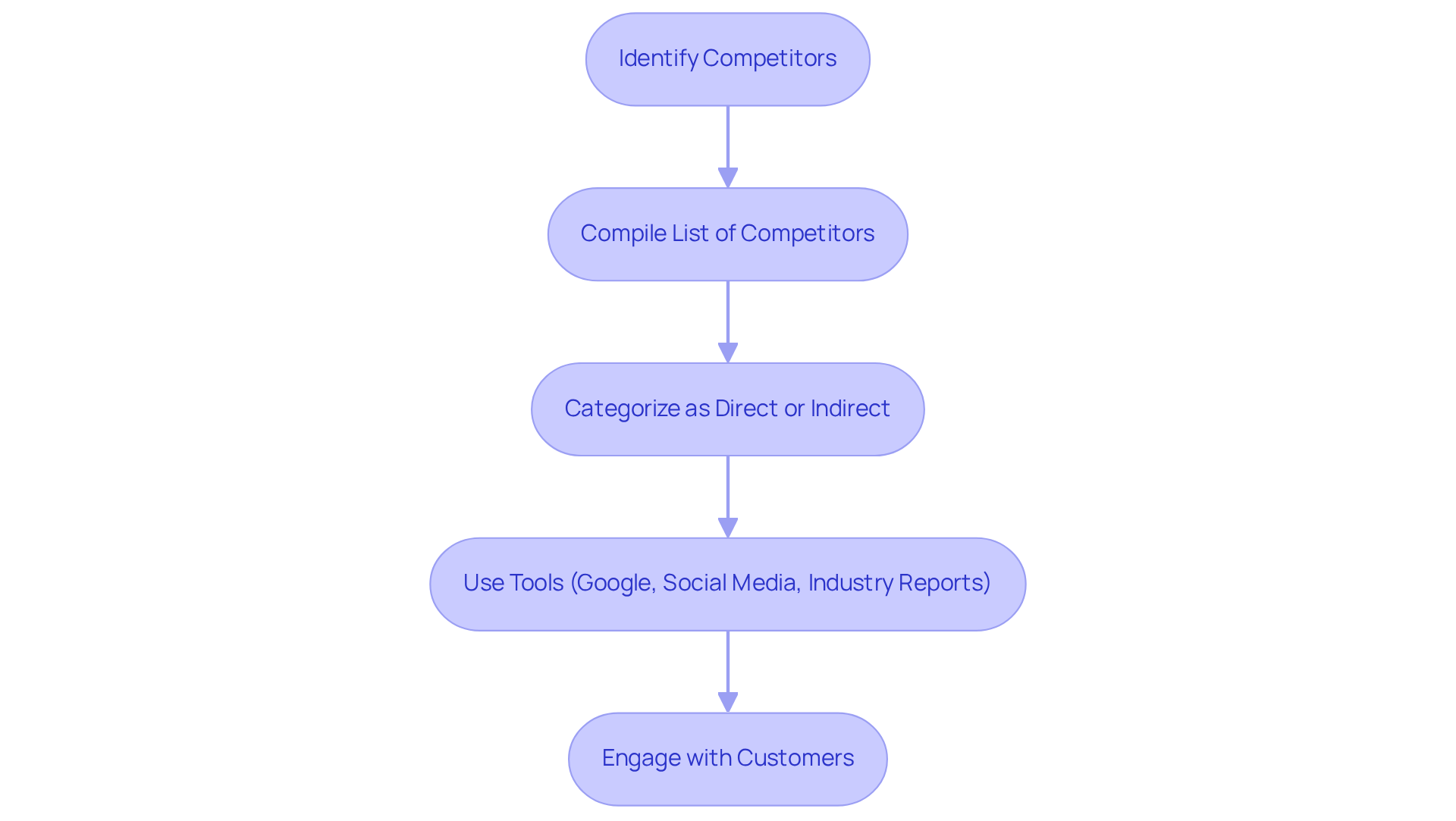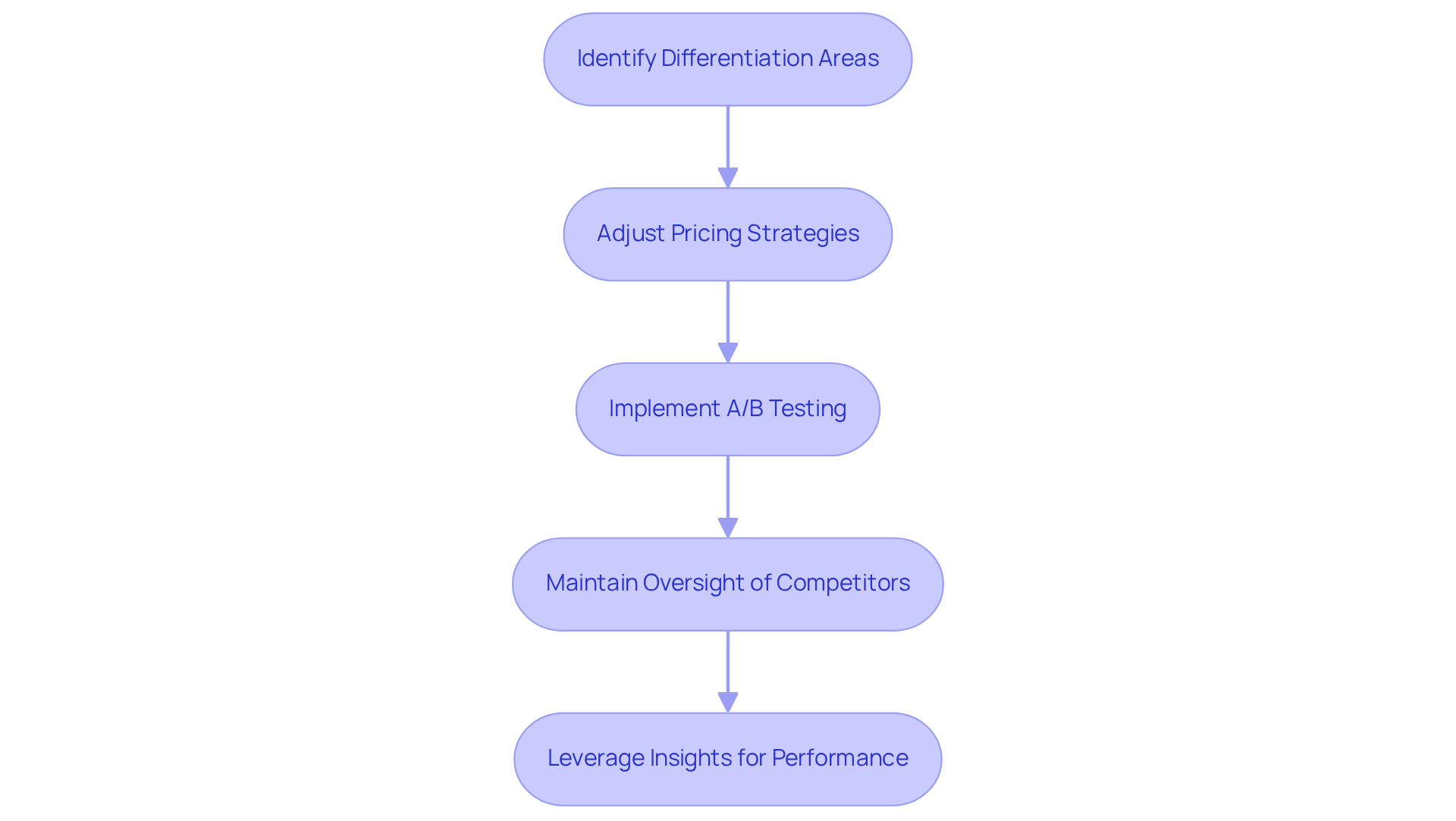
Overview
This article delineates four essential steps for executing effective competitive analysis in direct-to-consumer (DTC) brands.
- Identifying competitors is crucial; this foundational step sets the stage for deeper insights.
- Gathering and analyzing data allows brands to uncover valuable information about market dynamics.
- Leveraging these findings is imperative for optimizing strategies.
- By concentrating on competitors' strengths and weaknesses, DTC brands can distinctly position themselves in the market.
Ultimately, this structured approach enhances marketing and product strategies, leading to improved performance and a competitive edge.
Introduction
Conducting a competitive analysis is an essential strategy for direct-to-consumer (DTC) brands striving to establish their unique position in an increasingly saturated marketplace. By systematically evaluating competitors' strengths and weaknesses, businesses can uncover critical insights that foster differentiation and bolster market presence. Yet, in a landscape where numerous brands compete for consumer attention, how can a DTC company effectively pinpoint its competitors and utilize this analysis to refine its strategies? This guide will outline the crucial steps for executing effective competitive analysis, empowering brands not only to survive but to flourish in the dynamic DTC environment.
Define Competitive Analysis for DTC Brands
Conducting a competitive analysis for DTC labels is a critical process that involves systematically assessing the strengths and weaknesses of rivals within the same market. This strategic approach empowers companies to identify and enhancement. Key elements of this competitive analysis include:
- A thorough understanding of competitors' product offerings
- Pricing strategies
- Marketing tactics
- Customer engagement methods
By defining competitive analysis in this authoritative manner, DTC companies are better positioned to meet consumer needs and significantly enhance their market presence.

Identify Your Competitors
To identify your competitors, start by compiling a list of names that offer to your target audience. This includes both direct competitors—those selling identical products—and indirect competitors, who provide alternatives.
Leverage tools such as:
- Google Search
- Social media platforms
- Industry reports
to assemble a comprehensive list. Furthermore, engage with your customers to ascertain which brands they view as alternatives. This step is crucial for ensuring that your analysis of the competition is thorough and pertinent.

Gather and Analyze Competitor Data
To effectively , begin by thoroughly examining their websites, social media platforms, and customer feedback. Focus on essential elements such as:
- Product offerings
- Pricing strategies
- Promotional tactics
- Customer engagement methods
Employing tools like SEMrush or Ahrefs can significantly enhance your evaluation by providing insights into your rivals' online visibility and traffic sources. Notably, 94% of businesses are planning to invest in competitive analysis, underscoring its critical importance in today’s market.
Once you have gathered the data, conduct a competitive analysis to identify trends, strengths, and weaknesses within your rivals' strategies. Pay particular attention to gaps in their offerings that your company can exploit, such as unmet customer needs or areas where they face negative feedback. Remarkably, companies analyze only about 12% of their collected data, indicating substantial opportunities being overlooked. This thorough evaluation, incorporating competitive analysis, will yield valuable insights that can inform and refine your own marketing strategies, ultimately positioning your brand for greater success in the competitive DTC landscape. As Patrick Campbell observes, monitoring DTC metrics can facilitate momentum and unlock growth, making this evaluation essential for your brand's success.

Leverage Findings to Optimize Strategies
Applying knowledge from competitive analysis is essential for enhancing your marketing and product strategies. Begin by identifying distinct areas for differentiation, such as unique selling propositions or superior customer service offerings.
Adjust your pricing strategies by meticulously analyzing competitor pricing and perceived value, ensuring your prices remain competitive while safeguarding profitability.
Implementing A/B testing is crucial; research indicates that direct-to-consumer (DTC) brands engaging in A/B testing can achieve conversion rate improvements of up to 30%. This method enables real-time evaluation of new strategies' effectiveness.
Moreover, maintain vigilant oversight of rival activities, as can lead to improved decision-making and increased profitability.
By actively leveraging insights from your competitive analysis, which includes customer feedback to gauge competitor performance, you can substantially boost your brand's performance and profitability in the ever-evolving DTC landscape.

Conclusion
Conducting a competitive analysis is not merely beneficial; it is essential for direct-to-consumer (DTC) brands aspiring to excel in a saturated marketplace. By systematically evaluating competitors, brands can uncover pivotal opportunities for differentiation and growth, ultimately enhancing their market presence. This structured approach not only facilitates an understanding of rivals' strengths and weaknesses but also equips DTC companies with the critical insights necessary to meet consumer demands effectively.
Key steps in this process encompass:
- Identifying competitors—both direct and indirect
- Gathering and analyzing pertinent data
- Leveraging findings to optimize marketing and product strategies
Tools such as Google Search, SEMrush, and customer feedback are invaluable in this endeavor, enabling brands to gain a comprehensive view of the competitive landscape. The insights derived from this analysis can lead to improved pricing strategies, unique selling propositions, and enhanced customer engagement methods, all of which are crucial for maintaining competitiveness and profitability.
Ultimately, the significance of competitive analysis cannot be overstated. It serves as a cornerstone for informed decision-making and strategic planning in the fast-paced DTC sector. Brands that actively engage in competitive analysis are better positioned to adapt to market changes, innovate, and ultimately achieve sustained growth. Embracing this process not only empowers DTC brands to stay ahead of the competition but also fosters a culture of continuous improvement and responsiveness to consumer needs.
Frequently Asked Questions
What is competitive analysis for DTC brands?
Competitive analysis for DTC (Direct-to-Consumer) brands is a systematic assessment of the strengths and weaknesses of rivals within the same market, aimed at identifying opportunities for differentiation and enhancement.
Why is competitive analysis important for DTC brands?
It empowers DTC companies to better understand their competitors and meet consumer needs, ultimately enhancing their market presence.
What key elements are involved in conducting a competitive analysis?
Key elements include understanding competitors' product offerings, pricing strategies, marketing tactics, and customer engagement methods.
FAQs











